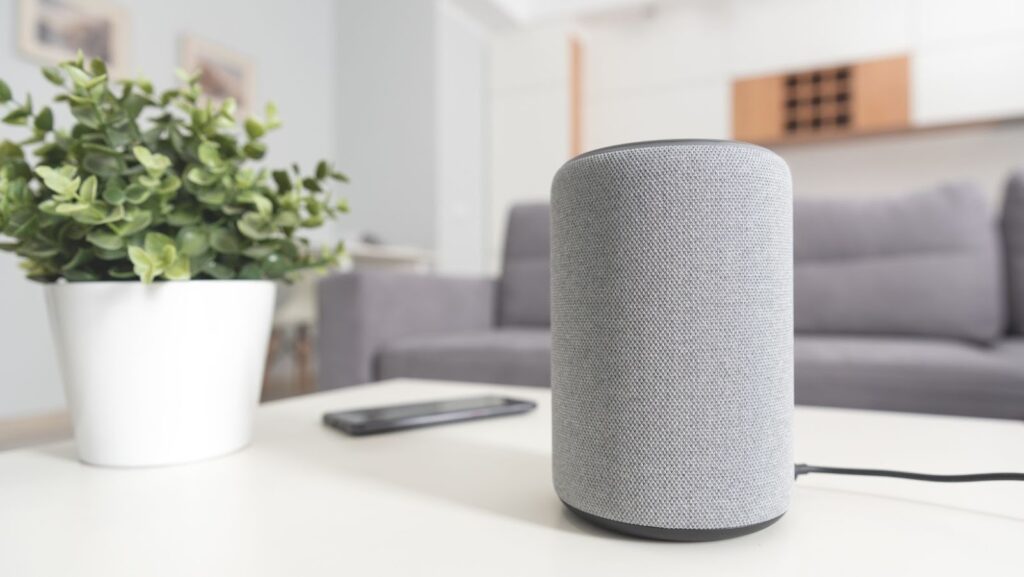
Apple’s original HomePod was the company’s first foray into the world of smart speakers. It was a great device with top-notch sound quality and Siri support, but it was ultimately discontinued after two years on the market. This article will discuss why the HomePod was discontinued and the implications for Apple’s current lineup of smart speakers.
Apple’s Original Homepod Discontinued
Apple’s HomePod was a smart speaker powered by Siri, the company’s intelligent personal assistant. It was designed to work with Apple Music, and offered premium sound quality that could compete with other high fidelity audio products. The HomePod was released in February 2018 and discontinued in March 2020.
The HomePod featured a built-in amplifier, seven tweeters, and one woofer capable of delivering powerful, detailed sound with deep bass throughout any room. It also had features such as automated room sensing to adjust the sound based on the size and shape of its environment and voice recognition technology to detect who’s speaking so the music can be personalised accordingly.
The HomePod ran on Apple’s A8 chip which enabled all these features and tight integration into Apple’s wider product ecosystem meaning users could easily control their other devices using Siri. However, while offering impressive build quality and seamless integration into Apple’s platform, Apple’s HomePod also came at a premium price starting at $349 for the base model.
In March 2020, The HomePod was officially discontinued by Apple citing a lack of sales due to being unappealing to consumers due to its high cost compared to competitive offerings from Amazon and Google.

This marked the end of Apple’s foray into the market for smart speakers not running their software platforms such as AirPlay 2 or their streaming service – something that is likely crucial for smart speakers going forward if it is to succeed in this competitive market place.
Reasons for Discontinuation
Apple’s original Homepod was discontinued in March 2020 due to poor sales performance. This was largely due to the lack of features offered compared to competitors and the prohibitive price tag. However, there are several other reasons why the original Homepod did not meet the market’s needs and Apple ultimately decided to discontinue it. Let’s take a look at some of the factors that led to its discontinuation.
Lack of Market Adoption
Lack of market adoption was a primary factor in Apple’s decision to discontinue its original HomePod. Despite debuting in February 2018 as the first offering in Apple’s smart speaker lineup, the HomePod was quickly overtaken by competitors – namely Google and Amazon – who excelled in creating mechanisms for seamlessly integrating their respective products into consumers’ lifestyles.
Despite receiving mixed reviews, many consumers were deterred by the HomePod’s relatively high price tag compared to similar offerings from other companies. Additionally, some tech media claimed it lacked standard features on other devices such as media servers and more comprehensive virtual assistant support. Because of this, many users simply chose not to adopt Homepod over rivals such as Google Nest Audio or Amazon Echo speakers.
For these reasons, Apple elected to reallocate resources and focus its development efforts on another direction: the new shorter-form HomePod Mini which debuted at a much lower price point but still boasted many of the same features found on its larger sibling. While both versions are still available from Apple stores, it’s clear that market demand for the original product has declined substantially since launch due to a range of factors including unfavourable reviews and competition from other providers.
High Price Point
One of the key reasons for the discontinuation of Apple’s original Homepod was its relatively high price compared to other smart speakers on the market. The original Homepod retailed for a hefty $349, nearly three times as much as some of its competitors which retailed for as low as $99. The high price point made it unattractive to many potential customers and ultimately hurt Apple’s efforts to gain important market share in the home audio market.
At launch, the Homepod received mixed reviews from critics. While some lauded its attractive design and superior sound quality, they noted that it lacked features found in competitors’ speakers such as support for third-party services like Spotify and compatibility with multi-room setups. To make matters worse, the smart speaker had trouble connecting with Apple’s products such as iPhones and iPads leading to reports of poor usability.
Finally, discrepancies between global availability also hindered customer adoption of Apple’s Homepod. It was initially only available in a few countries. These frustrating potential customers wanted an easy way to access their favourite music or get answers from Siri without purchasing a different product altogether. These unique factors all accumulated together, making Apple’s first-generation Homepod less attractive than similar yet more affordable devices from competitors such as Amazon and Google.
Poor Sound Quality
Apple first introduced their Siri-enabled HomePod speaker in February 2018, but two and a half years later discontinued the product line citing poor sound quality as one of the main reasons for discontinuation. As the retail price for a home speaker is already quite high, customers would expect to get quality audio experience and Apple could not meet that expectation. The company had chosen to include high-end components such as its A8 processor into the production of HomePod, however, this led to limited battery life and less than suitable sound output for audiophiles.

Furthermore, Apple’s tight-lipped nature regarding software updates and HomePod’s closed ecosystem meant users relied on external applications or streaming services outside of those offered by Apple; negating one of the benefits of having a HomePod in the first place. With rising competition coming from competitors such as Amazon either launching their speakers or providing series of their posts with various smart home components; this combined with Apple’s decline in quality has contributed to its retirement on June 2nd of 2020.
Impact of Discontinuation
Apple’s original HomePod was released in 2018, but was discontinued in early 2020. This product’s discontinuation has impacted Apple’s product lineup, which is why this decision is significant. In this article, we will look at the effects of the discontinuation, analyse why it happened, and discuss the future of Apple’s HomePod lineup.
Loss of revenue
The discontinuation of the original Apple HomePod resulted from a combination of lack of sales, declining demand, and misjudgment of customer preferences. Apple has not released specific details about the hardware’s sales. Still, data from Counterpoint Technology Market Research suggests it accounted for just 4 percent of total global smart speaker sales in 2019 and failed to sell more than 1 million units in any quarter.
It is also understood that customer preferences in the smart-speaker market have shifted away from pricey home audio products with limited voice assistant capabilities towards cheaper portable speakers that rely on virtual assistants like Alexa. This shift was demonstrated by Amazon’s Echo Dot being the top-selling device in 2019, despite being launched in 2016. As a result, Apple’s HomePod faced fierce competition from cheaper options and Apple no longer had confidence in its ability to remain competitive.
This decision resulted in cancelation plans for “the remainder of its engineering efforts” when it came to the device and surely contributed to a loss of revenue for the Cupertino based company as one of their signature products has been discontinued from store shelves worldwide.
Loss of Market Share
The discontinuation of Apple’s original HomePod was thought to be a direct result of the company’s reduced market share in the smart-speaker market. In addition, the HomePod failed to gain substantial traction with consumers due to its high price tag and limited features compared to other top media-streaming devices.
It was initially released in February 2018 and aimed at taking on competitors such as Amazon Echo and Google Home. However, this was met with little success due to its limited range of streaming services, lack of multi-user compatibility and limited features such as call support; all features that were present on rival devices at a much lower price. Consequently, Apple saw its market share decline rapidly when competing products began popping up on the market; leading them to ultimately discontinue their original HomePod in March 2019.

Apple cited “changing customer needs” as the main reason for discontinuing the original device and followed up its demise with a cheaper more capable version – the HomePod mini – in November 2020. The transition from a large device with a specific feature set for a higher price point to a smaller device with multi-features at an affordable price point can be seen as a conscious move away from competing directly with Amazon Echo or Google home products while still providing customers with similar experience.
Conclusion
After analysing the data, we have concluded that Apple’s original Homepod was discontinued due to a lack of popularity and low customer satisfaction. In addition, the Homepod had technical problems and the cost was high compared to competitors. The company did not update the product with new features or lower the price, which led to its discontinuation.
Apple’s Commitment to Innovation
Innovation is at the core of everything Apple does and they are continually striving to bring the latest technology, services and experiences to their customers. Unfortunately, this has meant that, increasingly, they have had to decide to discontinue products to make way for new ones. As such, it was with regret that the company announced in early 2020 that the HomePod would be discontinued.
Although it came as no surprise, with Apple launching new devices like AirPods Max and HomePod mini along with other products like iPhone 12 and iPad Air powered by A14 Bionic Chip., consumers mourned the end of an impressive device. However, it was clear from its design, sound quality and features that the HomePod set a precedent for tech companies shipping modern audio devices as part of their product line-up.
Ultimately, however, these advancements ushered in a different scope of product innovation compared to what HomePod was offering when it originally launched in 2018. With this in mind – while it’s never easy saying goodbye – Apple demonstrated their commitment to continual innovation by agreeing that now is an appropriate time for them to move away from this product to focus on future projects.
tags = original homepod discontinued, smart speaker for homes, smart home speaker, siri enabled speakers, homepod mini, homepod mini continuous production, homepod mini vs original homepod, smart home homepod, mini subwoofer, homepod apple carepanzarinotechcrunch, smart home assistant, smart home ai












